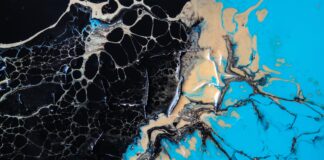NatureID, a groundbreaking technological advancement, stands as a testament to the convergence of nature and innovation. Harnessing the power of artificial intelligence and machine learning, NatureID transforms the way we interact with the natural world, offering a gateway to the vast realm of biodiversity. This innovative platform empowers individuals, from seasoned naturalists to curious enthusiasts, to identify plant and animal species with unparalleled accuracy and efficiency. By bridging the gap between technology and the environment, NatureID redefines our relationship with nature, unlocking a new dimension of exploration and understanding.
At the heart of NatureID’s revolutionary capabilities lies a sophisticated blend of cutting-edge technologies. Leveraging the prowess of image recognition algorithms, machine learning models, and comprehensive databases, this platform breathes life into the age-old question: “What species is this?” NatureID offers a transformative solution by transforming smartphones into virtual guides that decode the secrets of the natural world. By capturing images of plants and animals, users embark on a journey of discovery, aided by the platform’s ability to swiftly and accurately identify species.
The implications of NatureID extend far beyond the realm of individual curiosity. Conservation efforts, scientific research, and environmental education stand to benefit profoundly from this technological marvel. With rapid urbanization and biodiversity loss, the need for efficient species identification has never been greater. NatureID steps in as an ally in the fight against the loss of biological diversity, providing a tool to monitor and assess species populations. Moreover, researchers can tap into the vast database generated by NatureID users to further their understanding of ecosystems, migration patterns, and biodiversity trends.
The intricate workings of NatureID stem from its foundation in artificial intelligence. Machine learning algorithms, designed to mimic human cognitive processes, are the driving force behind the platform’s identification prowess. Through a process known as “training,” these algorithms learn from extensive datasets of labeled images, building a neural network that can recognize patterns and features. As users contribute more images to the platform, the algorithms refine their knowledge, continuously enhancing their accuracy and expanding their repertoire of species recognition.
NatureID’s potential is boundless, as it effectively democratizes the world of taxonomic expertise. Previously, species identification often required specialized knowledge, limiting accessibility to a select few. Now, NatureID places this knowledge directly into the hands of users, regardless of their background or training. From schoolchildren exploring their local flora to professional researchers working in remote corners of the globe, the platform levels the playing field, fostering a community united by a shared passion for understanding the natural world.
The marriage of technology and nature through NatureID also underscores the power of collaboration. Citizen science projects, where individuals contribute data to scientific endeavors, gain newfound momentum through the platform. Users become integral contributors to ongoing research initiatives, with their observations and identifications adding valuable data to scientific repositories. This dynamic partnership between the public and the scientific community fosters a deeper connection to nature and reinforces the importance of shared responsibility for its preservation.
As NatureID continues to evolve, the potential for interdisciplinary collaboration becomes even more apparent. From ecology and biology to data science and computer engineering, the platform’s influence extends across various fields. Environmental organizations can harness the data generated by NatureID users to inform policy decisions and conservation strategies. This synergy between technology, science, and advocacy amplifies the impact of collective efforts to safeguard our planet’s biodiversity.
In an era where technological advancements often come with unintended consequences, NatureID offers a refreshing narrative. It serves as a beacon of responsible innovation, demonstrating how technology can enhance our relationship with the natural world rather than detach us from it. By promoting environmental awareness and enabling informed interactions with ecosystems, NatureID shapes a future where technology and nature coexist harmoniously.
The journey into the heart of NatureID leads to a realization: the boundaries of exploration have expanded. As smartphones become tools for discovery and inquiry, the possibilities for engaging with nature have become limitless. NatureID invites users to step outside, capture the intricate details of a leaf, a flower, or an insect, and embark on a journey of identification and understanding. This seamless merger of technology and biodiversity instills a sense of wonder, reminding us that even in the digital age, nature remains an endless source of inspiration and discovery.
Artificial Intelligence-Powered Identification:
NatureID employs advanced AI and machine learning algorithms to accurately identify plant and animal species based on images captured by users.
Biodiversity Database:
The platform hosts a comprehensive database of species images and information, continuously expanding through user contributions, creating a valuable resource for research and conservation.
Democratization of Taxonomic Knowledge:
NatureID makes species identification accessible to users of all backgrounds, bridging the gap between specialized taxonomic expertise and the general public.
Citizen Science Engagement:
The platform promotes citizen science by involving users in contributing data for scientific research and conservation efforts, fostering a collaborative approach to understanding biodiversity.
Environmental Education and Awareness:
NatureID enhances environmental education by offering a user-friendly tool for exploring and learning about the natural world, cultivating a deeper appreciation for biodiversity and ecosystem health.
NatureID, an innovative fusion of technology and ecology, paints a vivid tapestry where the digital realm intersects with the natural world. This pioneering platform transcends the confines of conventional species identification, ushering in a new era of engagement with biodiversity. As society grapples with environmental challenges, NatureID emerges as a beacon of hope—a tangible manifestation of how modern technology can be harnessed to foster a deeper understanding of the planet we call home.
At its core, NatureID is a testament to the potential of human curiosity and ingenuity. The human drive to explore, understand, and connect with the natural environment finds new expression in this digital realm. With the aid of smartphones and an internet connection, users can transform into amateur naturalists, embarking on journeys of discovery right from their backyards or local parks. The simple act of capturing an image of a plant, insect, or animal sets in motion a sequence of events that bridges the gap between technology and nature.
The beauty of NatureID lies in its seamless integration of multiple disciplines. The platform harmoniously blends artificial intelligence, ecology, data science, and community engagement to create an ecosystem where individuals, regardless of their background, can contribute meaningfully to scientific knowledge. As users upload images of their natural finds, they become part of a growing community that collectively contributes to the world’s understanding of biodiversity. This spirit of collaboration enriches the fabric of citizen science, transforming passive observation into active participation.
The process through which NatureID identifies species is a testament to the marvels of modern technology. Machine learning algorithms, inspired by the workings of the human brain, lay the foundation for the platform’s identification capabilities. By “learning” from vast datasets of labeled images, these algorithms develop the ability to recognize patterns and features that distinguish different species. This intricate process—akin to how a human brain learns—empowers NatureID to provide accurate identifications, opening a gateway to a deeper appreciation of the natural world.
As users immerse themselves in the world of NatureID, they embark on a journey of discovery that extends far beyond individual species names. Each identification is a thread woven into the fabric of biodiversity research. The images and observations contributed by users offer windows into ecosystems, distribution patterns, and seasonal changes. These data points contribute to a broader understanding of how species interact with their environments and how these interactions influence ecosystem health. In this way, NatureID transforms individuals into ecological storytellers, weaving narratives that transcend the confines of a single image.
The reach of NatureID extends into realms beyond the digital screen. Schools, environmental organizations, and research institutions can harness the platform’s capabilities to foster environmental education and conservation awareness. Imagine a classroom where students, armed with smartphones, venture into the outdoors to explore the flora and fauna around them. Through NatureID, what might have been a fleeting encounter with a flower or a butterfly becomes a lesson in curiosity, inquiry, and the interconnectedness of life.
Conservation efforts, too, stand to gain immensely from NatureID’s existence. Rapid urbanization, habitat loss, and climate change pose significant threats to biodiversity. By equipping individuals with tools to identify and document species, NatureID contributes to the collective effort to monitor changes in species populations and distributions. This data, when aggregated on a global scale, provides a snapshot of the state of the planet’s biodiversity, guiding conservation priorities and policy decisions.
Yet, NatureID’s significance extends even beyond its tangible contributions. The platform fosters a sense of wonder and awe—an intangible connection between humanity and the natural world. In a world characterized by screens and virtual experiences, NatureID brings individuals back to the tactile and tangible. It invites users to kneel beside a mushroom, gaze at the intricate veins of a leaf, and marvel at the hues of a butterfly’s wing. These moments of connection remind us that we are part of a web of life that spans continents and ecosystems.
NatureID’s emergence is a reminder that technology, when wielded thoughtfully, can amplify our capacity for empathy and understanding. It reflects the harmony that can be achieved when innovation aligns with the imperative to safeguard our planet’s biological diversity. NatureID isn’t just an app; it’s a testament to the ingenuity of humans who recognize that the digital and the natural are not opposing forces, but rather complementary elements that can coexist and thrive.
As NatureID continues to evolve and expand its reach, its legacy will extend beyond its coding and algorithms. It will live on in the memories of individuals who, through the lens of their smartphones, found themselves on a journey of discovery. It will echo in the classrooms where students marveled at the intricacies of the natural world. It will reverberate in the data repositories where scientists and conservationists draw insights that shape our understanding of the planet’s ecosystems.
In a world where the pace of life often drowns out the whispers of the natural world, NatureID amplifies those whispers into a symphony. It stands as a digital tribute to the intricate beauty that surrounds us—a beauty waiting to be unveiled, captured, and shared. With every identification, every observation, and every moment of wonder, NatureID leaves an indelible mark on the evolving relationship between humanity and the Earth—a relationship that is, at its core, a celebration of life in all its diverse and wondrous forms.














